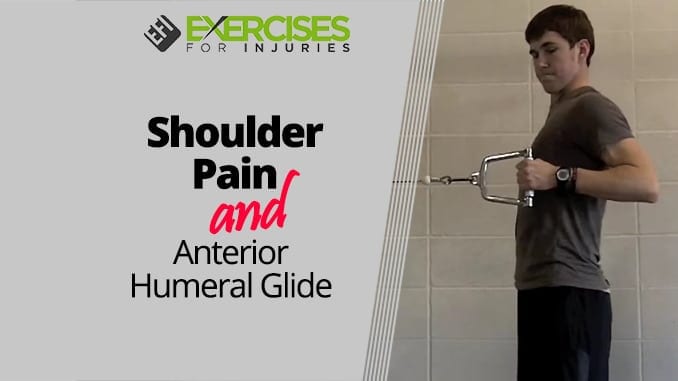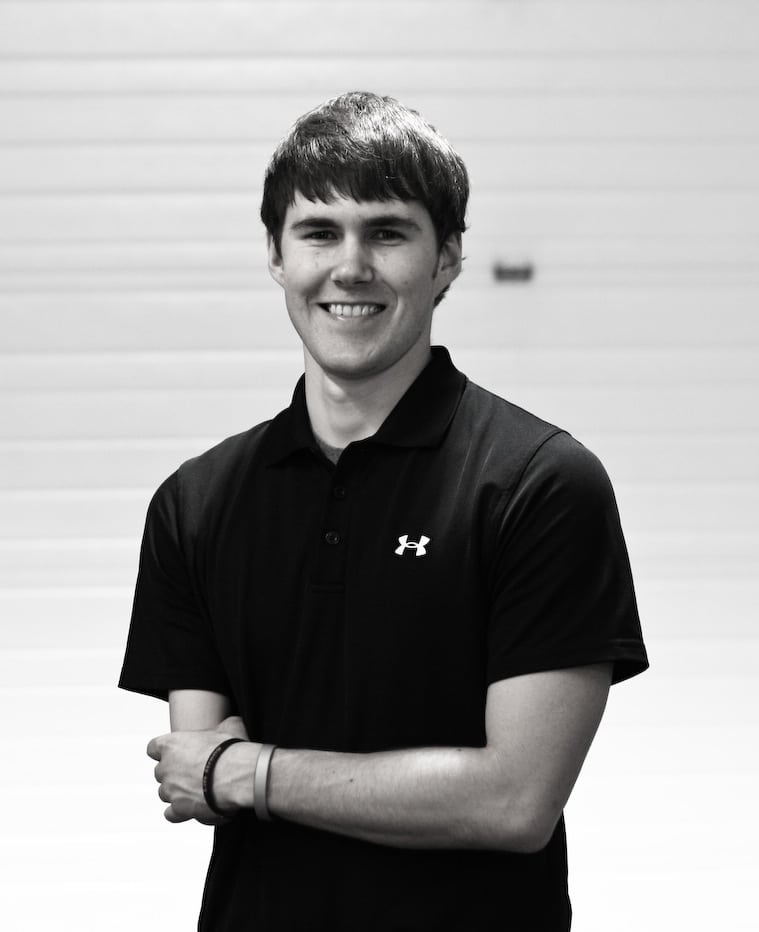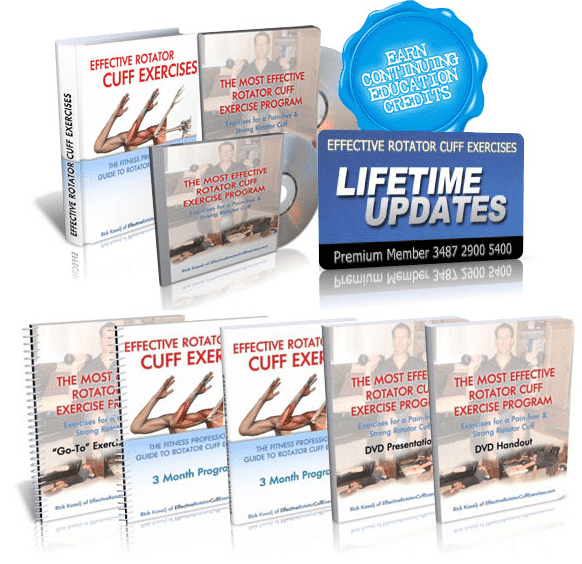
Today I have a great guest blog post on Shoulder Pain and Anterior Humeral Glide.
The excellent info is from Zach Moore.
Take it away, Zach.
How can Anterior Humeral Glide Lead to Shoulder Pain?
Anterior humeral glide (AHG) is a common problem among many individuals and occurs when the humeral head’s excessive or abnormal anterior movement during shoulder motions. AHG can happen during any activity where the humerus moves into extension or horizontal abduction.
It is essential to spot and correct this mistake because AHG can eventually lead to, or further aggravate, anterior shoulder pain, AC joint problems, pec, lat strains, and impingements. Therefore, today I want to look at some joint exercises where this often occurs and then go over possible solutions to help address it.
Again, this problem can occur during any exercise where the humerus moves into extension or horizontal abduction, but I will only cover a few popular activities.
The fixes and mistakes for each will usually be similar so that you can apply them to other exercises.
Horizontal Row
Video Demonstration of Anterior Humeral Glide during a horizontal row along with cues to help correct this:
Cues and Possible Fixes:
- Place your hand medial to their scapula and cue them to squeeze back.
- Point to the anterior part of their humeral head and tell them to pull that back.
- Help guide them into the proper position. Place one hand on the anterior part of their humeral head and the other on their scapula. As the person begins to grow, guide their scapula into retraction and apply posterior pressure to their humeral authority.
- Lastly, have them try rowing with both arms. Sometimes their inability to retract is just a coordination problem, which will allow them to feel their shoulder blades being squeezed together.
Dumbbell Row
Video Demonstration (first two reps demonstrate AHG, last two agents show correct form):
Cues and Possible Fixes:
- Same lines and fixes as described with the horizontal row above.
- Make sure the spine is neutral. If the upper back is not flat, you are more likely to see a faulty rowing pattern.
Push-Up
Video Demonstration (first two reps demonstrate AHG, last two agents show correct form):
Cues and Possible Fixes:
- Make sure the spine is neutral. This will help to better position the scapula on the rib cage, which will help facilitate proper retraction on the eccentric (lowering) phase.
- Cue them to squeeze their shoulder blades together to activate their scapular muscles as they lower their body.
- Use an incline or raise the pitch to make the exercise less challenging.
- Shorten the range of motion (i.e., do not have them lower as far).
Chin-Up
Video Demonstration (first two reps demonstrate AHG, last two agents show correct form):
Cues and Possible Fixes:
- Tell them to think about putting their shoulder blades into their back pocket.
- Have them demonstrate how to squeeze shoulder blades down and back before they perform the movement. This will ensure they know what you mean.
- Use a band or increase the band tension to make it easier.
- Try a Chin-Up ISO. This is an exercise we usually give to clients at IFAST before progressing them to a full chin-up. You get into the top position of a chin-up with chest to the bar and scaps depressed. You then hold this position for max time. It is very effective for teaching people the final portion of this exercise.
- Lastly, if the above strategies do not work, I would take them to a Lat Pulldown where the stability requirements are less demanding.
Bench Press
Cues and Possible Fixes:
- First, I would ensure the person could perform a push-up properly without AHG before giving them a bench press.
- If AHG occurs during this exercise, you know they are not keeping their shoulder blades retracted, which is desirable when performing a bench press.
- Please ensure the client knows that they should not protract (i.e., make arms long) at the end range. This will better allow them to keep their shoulder blades together.
Final Points
Never be afraid to lighten the load or decrease the stability requirements. Performing an exercise over and over with incorrect form (in this case, anterior humeral glide) will not fix the problem/form.
If the cueing and loading strategies above do not work, you may need to resort to other corrective procedures such as soft tissue treatment and rotator cuff exercises. For gentle tissue treatment, I would first examine the posterior shoulder capsule. It can often be stiff and restricted, which will not allow the humerus to glide posteriorly as it is flexed. Next, examine the pecs as they can become dominant and pull the humeral head anterior.
For the rotator cuff, I would examine the subscapularis. If the sub-scan is too long or weak, then its downward and posterior pull will not be able to offset strong muscles, such as the pec major, that pull the humeral head anterior. Therefore, strengthening exercises for this muscle may be appropriate.
Summary:
Learn to retract/depress appropriately by squeezing the scapula back/down without allowing the humeral head to glide anteriorly.
Familiar Cues and Fixes:
- Make sure the person is in a good spinal position.
- Put the hand back by the shoulder blade and tell the person to squeeze the shoulder blade around to touch the needle.
- Point to the anterior part of the humerus and say to the person to pull it back.
- If performing a unilateral pulling exercise, try to pull with the other arm simultaneously, which may allow for better proprioception.
- Lighten the load.
- Reduce stability requirements
- Ensure the problem is not due to soft tissue restrictions and a weak cuff.
I hope this helps! It is always great to hear other cues! If anyone has any other tips or suggestions, leave them in the comments.

Zach obtained his bachelor’s and master’s degrees from Indiana University Purdue University-Indianapolis. He held certifications with the National Strength and Conditioning Association as a Certified Strength and Conditioning Specialist (CSCS) and USA Weightlifting as a Sports Performance Coach. Check out his blog at Zimoore.blogspot.com.
===========================
It is Rick again.
Big thanks to Zach.
Lots of great and beneficial information.
If you want to check out the Rotator Cuff Exercise Program that I use with my client, it is right here:
A few other articles on shoulder pain and injuries that may interest you:
- Scaption and Shoulder Impingement
- Shoulder Pain Assessment
- What to do if the Wall Chest Stretch is Painful?
These videos may interest you as well:


